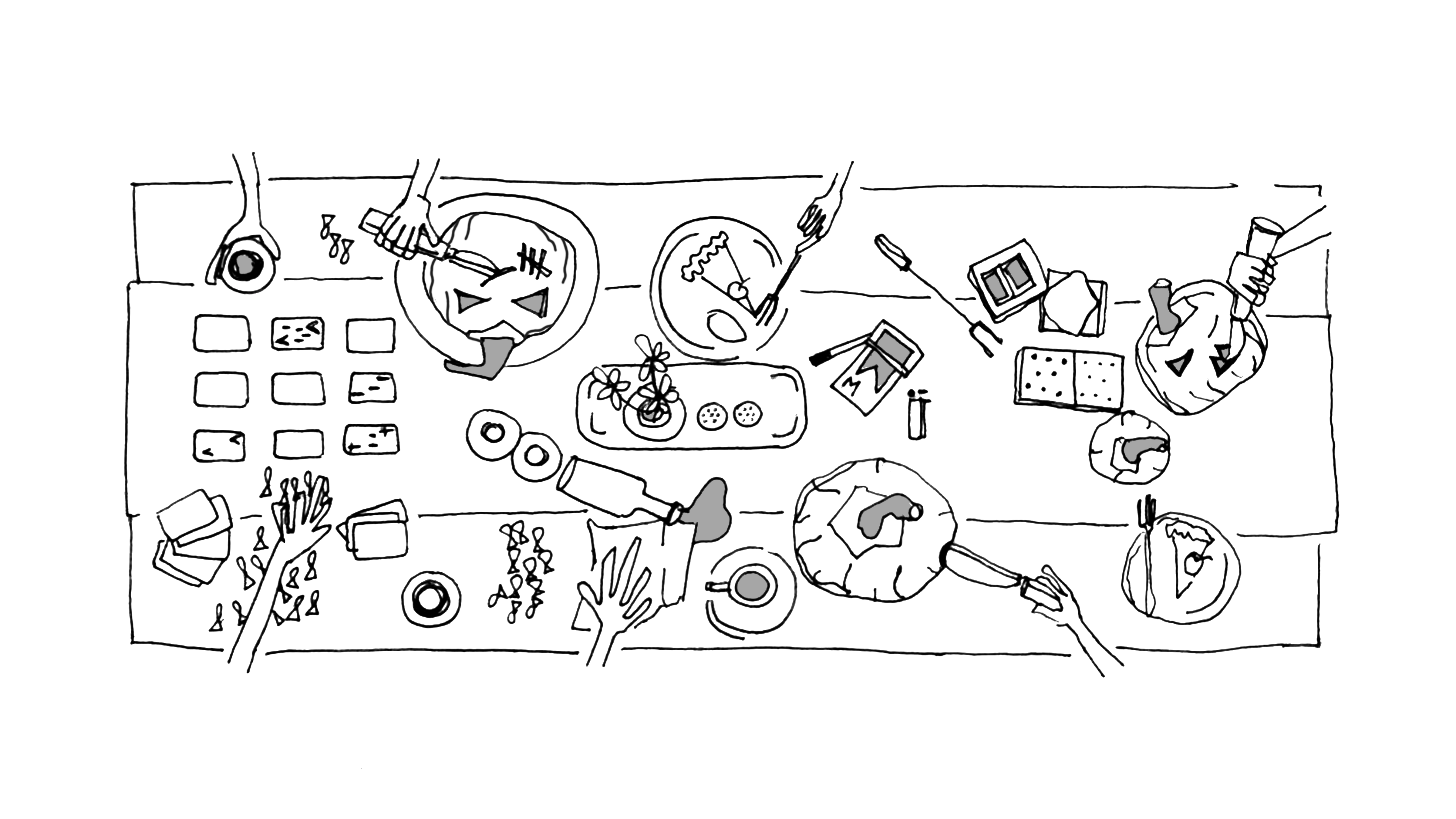Sharing the Table
Contributor
Loud Hopes
The architect inside of me is curious—does studying architecture make me a better pumpkin carver? Do the hours spent wielding a yellow Olfa knife against Bristol paper and stubborn chipboard somehow translate to a superior ability to sculpt a jack-o’-lantern than those who seldom venture into Rudolph Hall?
This is a question I sought to answer during fall break, amidst the reds and oranges of autumnal New Hampshire, with friends I had known since first year, none of whom study architecture.
After picking up pumpkins fresh from the patch, the carving commenced. An intended scary jack-o’-lantern face became a winking pout; lightning bolts were serendipitously added on the back of its head. Sure, the heavy-handled kitchen knives, blunt and tapered on a curve, made the task awkward, but the unfamiliarity also made it human. With no logic and no pressure of an impending critique, the process was what all making should be—mindless, messy, occasionally frustrating, and quietly beautiful.
The pumpkin carving started at midnight and finished at 1 am, as part of an evening interspersed with s’mores, ciders, and cigs. At the same family table, others played blackjack using goldfish crackers as their gambling currency and poured wine into glasses—more generously so when a victim fell into goldfish-bankruptcy.
This is not a scene that could ever be found in the concrete walls of Rudolph Hall: People of completely different disciplines, absorbed in their small entertainments, momentarily relieved of their assignments, simply content to share the same space and time.
Time is fleeting. Time flies just as fast when you are inside the woodshop—cranking out a model before the clock strikes 11 pm—as when you are outside. As the season Friendsgiving rolls around, I think about those who have known me since my first days at Yale, before my eyes lit up at the mention of Breuer’s cantilever chairs or I could ramble on about Le Corbusier’s modular man.
Sometimes, all you need is a no-crit pumpkin carve with non-architecture friends. Let any studio drive dissolve for a moment and enjoy the unpredictable rhythm of sculpting something organic, unplanned. Maybe there isn’t an answer to whether architecture makes me a better pumpkin carver—and maybe there doesn’t need to be one. Who’s to say where the line is between architect and pumpkin carver anyway? In the end, we are all thinkers and creatives at the same table. For it is the mindless nature of making at the table shared with people you love that is the true spirit of pumpkin carving.
